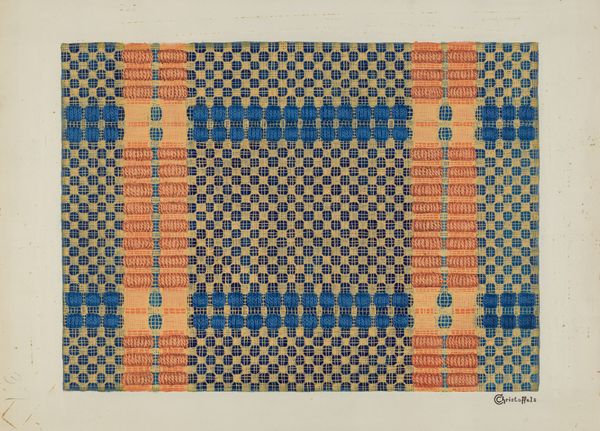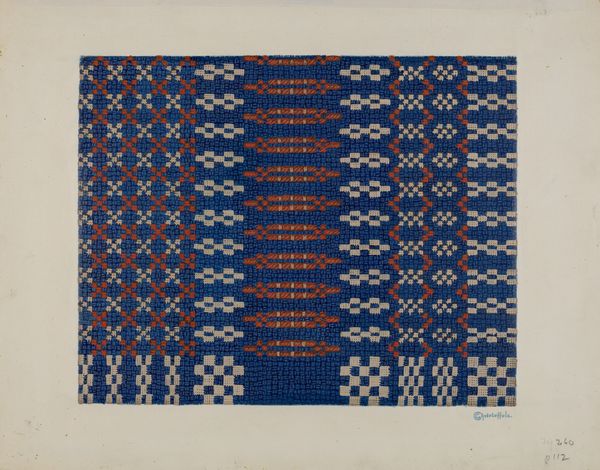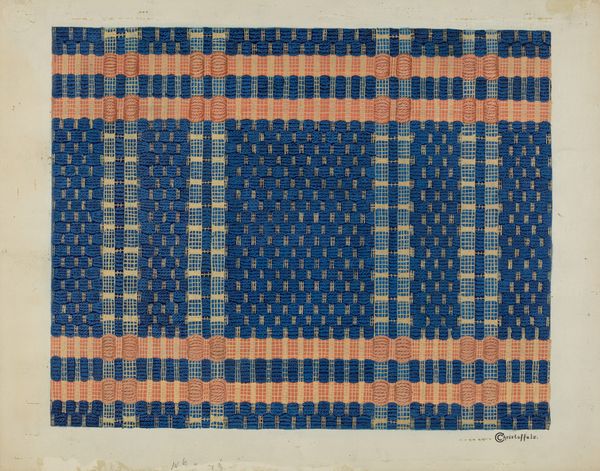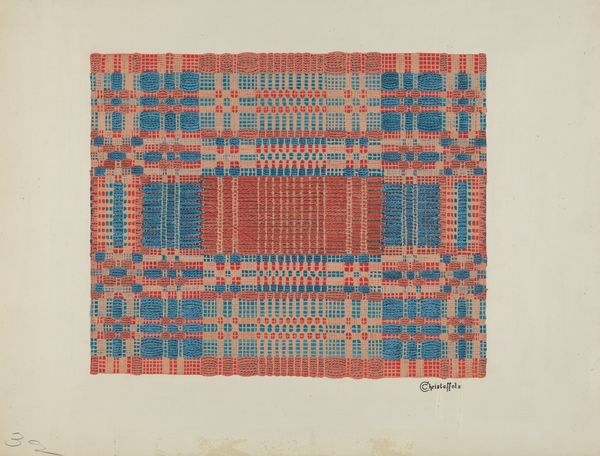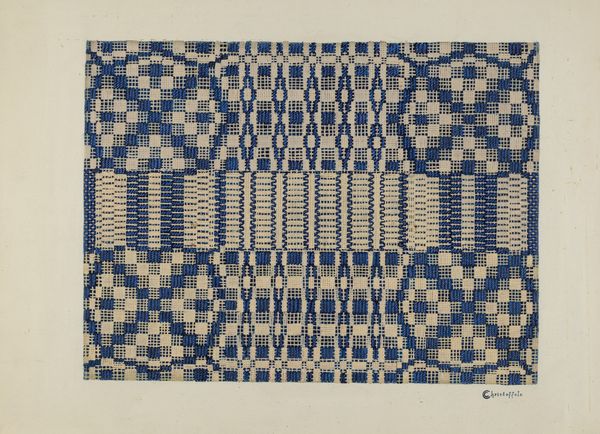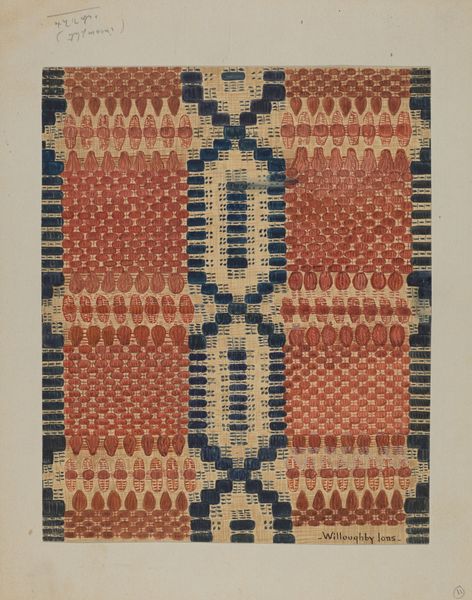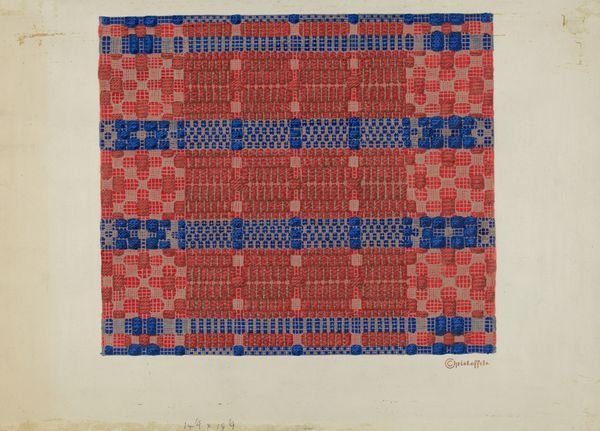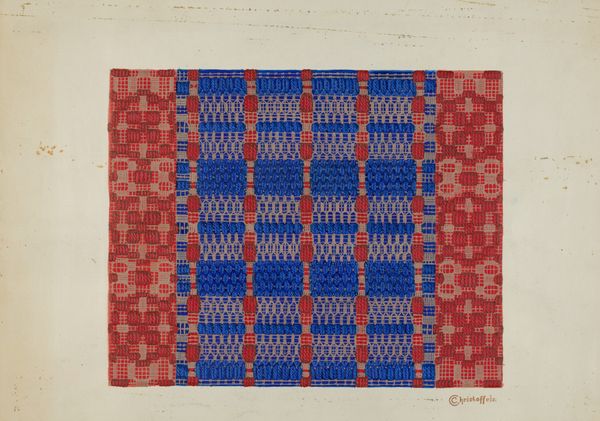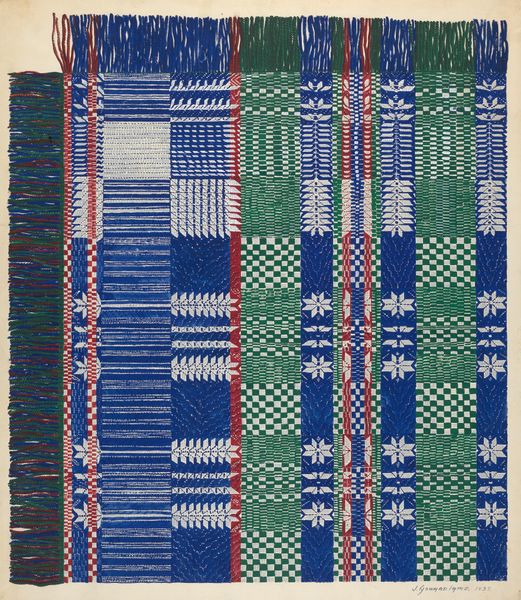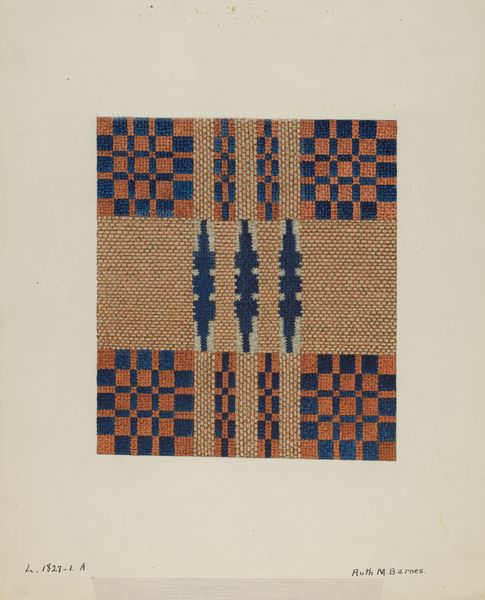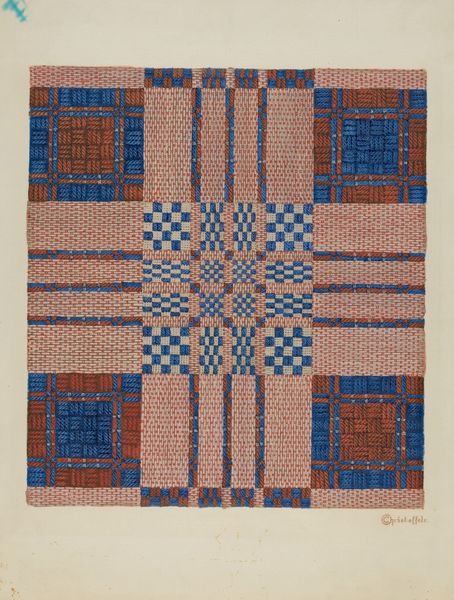
drawing, weaving, textile
#
drawing
#
weaving
#
textile
#
geometric pattern
#
abstract pattern
#
geometric
#
abstraction
Dimensions: overall: 25.7 x 32.4 cm (10 1/8 x 12 3/4 in.) Original IAD Object: 72" square
Copyright: National Gallery of Art: CC0 1.0
Curator: Immediately, I find it surprisingly warm and comforting, given the rigid geometric forms. Almost a meditative visual field. Editor: I’m so glad you said that, because that’s precisely what Cornelius Christoffels was trying to achieve in his textile works like this one, titled simply "Coverlet," created around 1937. Christoffels was exploring the intersection of abstract design and traditional weaving techniques. Curator: Traditional is the word! The colors, a muted blue and a peachy orange, definitely speak to an earlier era, though the abstraction feels very modern, doesn't it? I'm particularly drawn to the subtle shifts within the repeating geometric patterns; there’s almost a secret language being spoken here. Editor: Exactly! You've hit on something important. For Christoffels, geometric abstraction wasn't just about aesthetics, but about a symbolic language, hinting at deeper cultural memories embedded in textile traditions. He drew inspiration from Pennsylvania Dutch folk art, seeing in its motifs a connection to broader European folk traditions. Curator: So it’s like a visual echo then, of ancestral artistry resonating through time? That really strengthens the 'Coverlet’s' impact. It becomes more than just a piece of fabric; it’s a vessel carrying stories and traditions. Editor: Precisely. And consider the social context: The 1930s, a time of economic hardship, yet also of searching for identity through heritage. Artists and craftspeople like Christoffels were revitalizing these folk traditions, asserting cultural continuity, in an era of great anxiety. This piece is at once functional and a bold aesthetic statement. Curator: And within the composition, one sees that struggle, to connect. It gives the weaving its undeniable power; it's so visually rich and deeply connected to history. Editor: Absolutely. I think the act of weaving itself becomes a metaphor. Interlacing the threads of the past with the present and constructing something new and enduring. Curator: Yes, thank you for shedding light on it; what once seemed merely attractive is now teeming with purpose! Editor: Indeed. These everyday objects are the touchstones of memory.
Comments
No comments
Be the first to comment and join the conversation on the ultimate creative platform.
